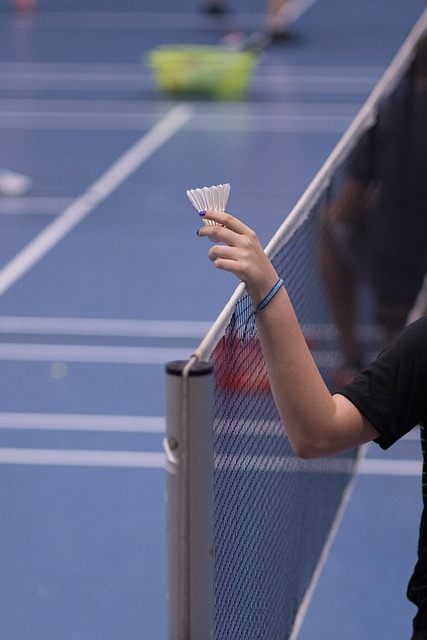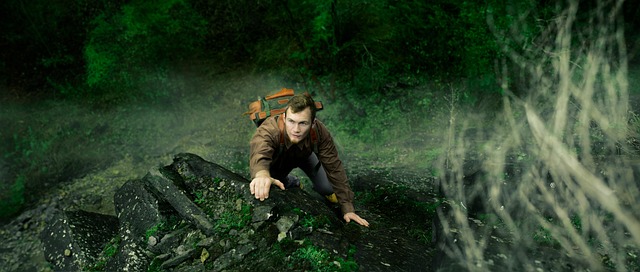Museums have evolved from static displays to immersive, interactive spaces driven by technologies like Virtual Reality (VR) and Augmented Reality (AR). These innovations, exemplified by hatta activities, transform visitor experiences, encouraging active participation and catering to diverse learning styles. Sensor-based technologies offer personalized journeys, while Artificial Intelligence (AI) and Robotics enhance interactivity and accessibility. This shift aims to create engaging, memorable encounters with collections, fostering deeper connections and inspiring future innovators.
“The future of museums is an exciting canvas where cutting-edge technology meets immersive experiences. This article explores how museums are transforming into dynamic spaces with innovative exhibits that engage visitors in unprecedented ways. From historical perspectives to futuristic trends, we delve into the impact of virtual reality, augmented reality, and interactive art installations. Additionally, we highlight Hatta activities—blending education and entertainment through advanced exhibits—and sensor-based technologies enhancing accessibility. Prepare to explore the museums of tomorrow.”
- The Evolving Role of Technology in Museums: A Historical Perspective
- Immersive Experiences: Virtual Reality and Augmented Reality in Exhibition Design
- Interactive Art Installations: Encouraging Visitor Engagement and Participation
- Hatta Activities: Blending Education and Entertainment through Cutting-Edge Exhibits
- Sensor-Based Technologies: Enhancing Accessibility and Personalized Visits
- Future Trends: AI, Robotics, and Their Impact on Museum Exhibitions
The Evolving Role of Technology in Museums: A Historical Perspective

Technology has played a pivotal role in transforming museums from static repositories of artifacts into dynamic, engaging spaces. Historically, museums have always adapted to new technological advancements, each era bringing its own innovations that reshaped visitor experiences. From the introduction of electric lighting, which allowed for extended opening hours and illuminated exhibits, to the integration of audio-visual media, technology has enhanced the storytelling capabilities of museums.
In recent years, interactive exhibits powered by cutting-edge technology have become a game-changer. These include virtual reality (VR) experiences that immerse visitors in historical events or distant lands, augmented reality (AR) applications enhancing on-site exploration, and digital touchscreens offering detailed information and interactive activities. Such advancements encourage visitor participation, fostering a deeper connection with the exhibited content. This evolution reflects a broader trend where technology serves not only to showcase collections but also to facilitate learning, spark curiosity, and create memorable, personalized museum encounters.
Immersive Experiences: Virtual Reality and Augmented Reality in Exhibition Design

The future of museum exhibits is here, and it’s immersive. Virtual Reality (VR) and Augmented Reality (AR) technologies are transforming how visitors engage with artwork and historical artifacts. These cutting-edge tools allow for interactive experiences that bring static displays to life. With VR headsets, patrons can step into virtual galleries, wander through time, and explore intricate details of exhibits as if they were right there in person. AR enhances this by overlaying digital information onto the physical space, providing contextual insights and even interactive games related to the displayed pieces.
Museums are leveraging these technologies to create engaging and educational experiences, offering visitors a chance to participate actively in their exploration rather than merely observing. Immersive VR and AR activities can cater to a wide range of audiences, from tech-savvy young adults to curious seniors, ensuring that museums remain relevant and appealing in the digital age.
Interactive Art Installations: Encouraging Visitor Engagement and Participation

Interactive art installations are transforming museums into dynamic spaces that go beyond traditional static displays. By integrating cutting-edge technology, these exhibits encourage visitors to actively participate and engage with art in novel ways. Touchscreens, motion sensors, virtual reality headsets, and other interactive elements allow visitors to manipulate digital content, explore hidden narratives, and even co-create artistic outputs. Such immersive experiences not only enhance the visitor’s understanding of artworks but also foster a deeper connection with the museum environment.
Hatta activities like gesture-controlled projections, sound installations that respond to movement, and collaborative digital canvases encourage visitors to become participants rather than mere observers. This interactive approach not only increases visitor satisfaction and retention but also caters to diverse learning styles and interests. By leveraging technology, museums can create exhibits that are both captivating and intellectually stimulating, ensuring a future where art appreciation is as much about active participation as it is about admiring visual beauty.
Hatta Activities: Blending Education and Entertainment through Cutting-Edge Exhibits

Museums are no longer just repositories of artifacts; they’re becoming dynamic, immersive spaces that blend education and entertainment through cutting-edge exhibits. One prominent example is Hatta Activities, which utilize advanced technologies like virtual reality (VR) and augmented reality (AR) to create interactive learning experiences. These innovative displays not only captivate visitors but also make complex topics more accessible and engaging. By immersing users in historical contexts or scientific phenomena, Hatta Activities transform passive observers into active participants, fostering a deeper understanding and appreciation for the displayed content.
Moreover, these futuristic exhibits are designed with diverse audiences in mind, ensuring that both children and adults can enjoy and learn from them. Interactive elements encourage exploration and curiosity, allowing visitors to manipulate variables, experiment with different scenarios, and even contribute to ongoing research projects. This hands-on approach not only enhances learning outcomes but also inspires a new generation of thinkers and innovators, making museums more relevant and exciting than ever before.
Sensor-Based Technologies: Enhancing Accessibility and Personalized Visits

Sensor-based technologies are revolutionizing museum experiences, offering visitors a more personalized and accessible journey through exhibits. By integrating sensors into displays and interactive elements, museums can create dynamic environments that adapt to individual preferences and abilities. For example, motion sensors can trigger immersive multimedia presentations, ensuring every visitor engages with the content in their own unique way. This technology facilitates hands-on learning experiences, allowing visitors to interact with exhibits using gestures or voice commands, making it especially beneficial for individuals with physical disabilities or those who prefer a more engaging, hands-off approach.
Moreover, sensor technologies enable museums to gather valuable data on visitor behavior and preferences. These insights can be used to curate futuristic exhibits that cater to diverse audiences. By analyzing movement patterns and interactions, museum staff can design interactive activities (hatta activities) that encourage exploration and discovery, enhancing the overall visitor experience. This personalized approach ensures that each guest feels valued and encouraged to engage with the museum’s offerings on a deeper level.
Future Trends: AI, Robotics, and Their Impact on Museum Exhibitions

The future of museum exhibitions is being reshaped by cutting-edge technologies like Artificial Intelligence (AI) and Robotics, opening up a world of possibilities for more immersive and interactive experiences. AI can personalize visitor journeys, providing tailored information and recommendations based on individual interests and learning styles. This technology can also power dynamic exhibits that adapt to visitors’ interactions, fostering deeper engagement with the displayed content.
Robotics enhances these experiences further by introducing physical interactivity through humanoid robots or automated guides. These robots can facilitate hands-on activities, offer real-time assistance, or even engage in conversations with visitors, creating memorable and personalized moments. By integrating AI and robotics, museums can make exhibits more accessible, captivating, and relevant to a diverse range of audiences, ensuring that they remain dynamic and competitive in the digital age.
As technology continues to advance at a rapid pace, museums are embracing innovative approaches to create immersive, interactive, and accessible experiences. From virtual reality to artificial intelligence, these cutting-edge tools are transforming exhibition design and visitor engagement. The future of museums is bright, with an emphasis on engaging both minds and hearts through dynamic displays that blend education and entertainment. This evolution ensures that cultural institutions remain relevant, captivating, and accessible to diverse audiences, fostering a deeper connection between visitors and the stories they tell. Furthermore, by integrating sensor-based technologies and exploring the potential of robotics, museums can create truly personalized experiences, catering to individual interests and learning styles—a testament to their role as dynamic and progressive cultural hubs. In this regard, Hatta Activities serve as an exciting example of how technology can enhance museum visits, offering unique, engaging, and memorable interactions that resonate with modern audiences.
